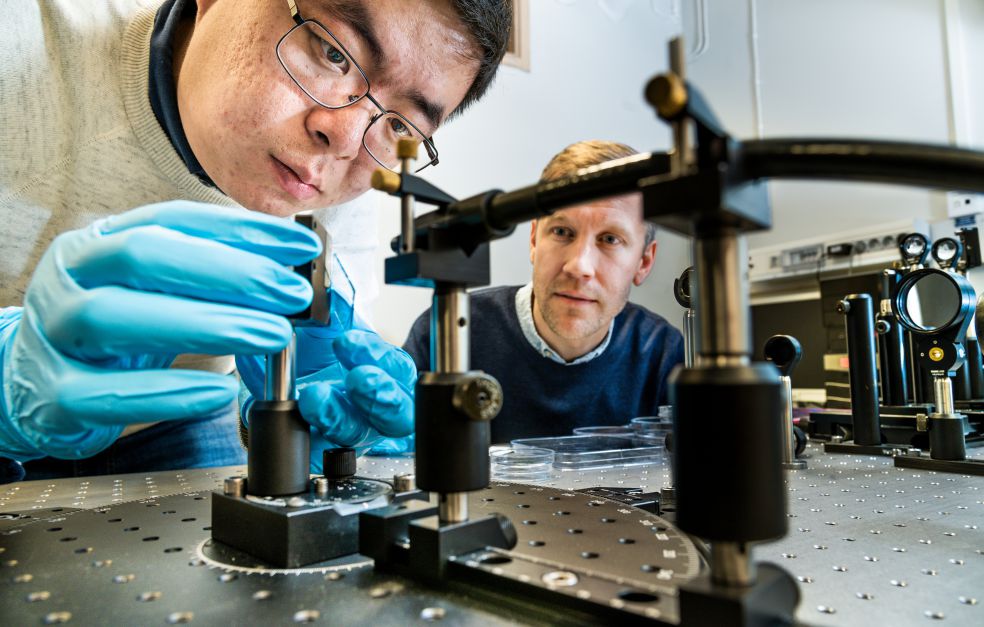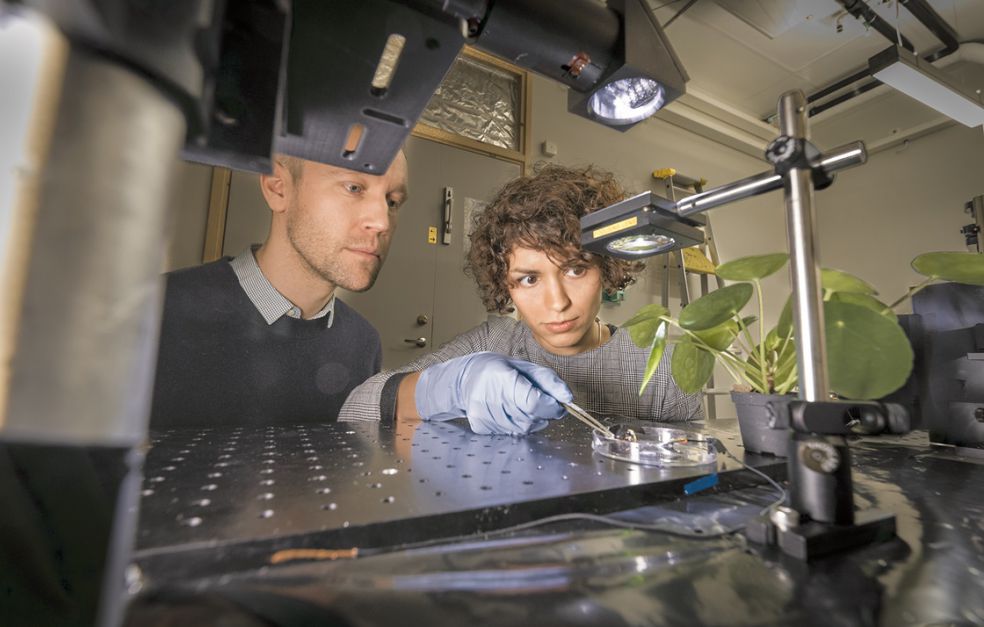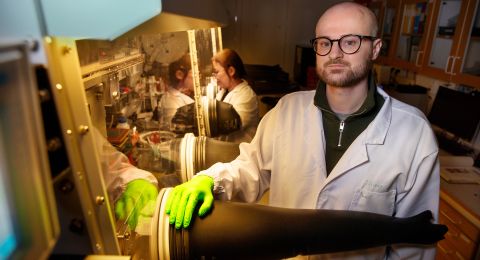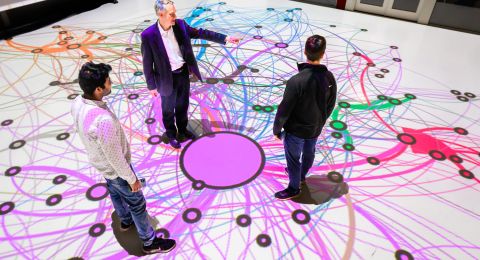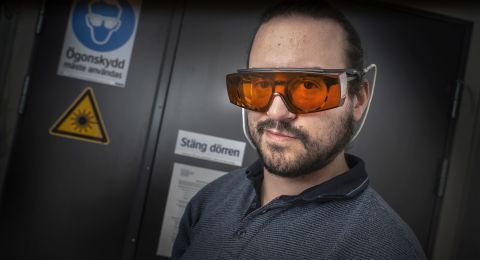Magnus Jonsson is combining two quite disparate research fronts: nanooptics and organic electronics. He has been chosen as a Wallenberg Academy Fellow, which gives him the resources and time to chisel out a new research field.
Magnus Jonsson
Associate Professor in Organic Electronics
Wallenberg Academy Fellow, prolongation grant 2020
Institution:
Linköping University
Research field:
Breaking new ground by combining nanooptics with organic electronics
Optical antennas are nanoscopic structures that make control of light at the nanoscale possible. This makes them useful for many applications: from sensors and energy applications to ultra-thin lenses and new materials possessing exotic optical properties.
Jonsson wants to take the nanoantenna concept a step further by fabricating them from electrically conducting polymers.
“We are the first in the world to produce this type of dynamic nanooptics based on conducting polymers, and the goal is to lay the foundation for new devices that we can control even once they have been made,” Jonsson says.
Attracted to a new field
When Jonsson left his postdoc position at Delft University of Technology to set up his own research team, he was drawn to Linköping University and its world-leading research in organic electronics.
“Organic electronics was a new field for me, and I was intrigued. And my field – nanooptics – was new to the researchers here. So I felt I could contribute something really new by combining our fields,” Jonsson explains.
Optical nanoantennas have mainly been made using metals, in most cases gold and silver. But this produces devices with a static function. The properties of the conducting polymers, on the other hand, can be controlled in various ways, which offers new potential. Jonsson’s research group is working on the hypothesis that this dynamic control ought to result in a number of applications. Examples include smart windowpanes that adapt to weather conditions and climate to regulate the amount of energy they let through. Other potential applications are components for future nanooptical computers that use light to make calculations. This will require new ways of controlling the light so the computer does not merely repeat the same calculation over and over again.
But Jonsson stresses that the path to several of these new applications is a long one, involving important fundamental questions about how light interacts with nanostructures made from these organic materials.
“Small changes in processing conditions can impact the polymers’ properties. In that sense they kind of live their own lives, compared with classical metals. This creates many opportunities, but also makes it difficult to predict what the results will be.”
Milestone already reached
When optical nanoantennas are made using traditional metals, free electrons in the structure make it possible to control the light. Light shining on a nanoparticle makes the electrons in the metal move in unison in what resembles a small cloud. This collective oscillation, which is called a plasmon, creates a strong optical field around the particle that can be exploited in various applications. When polymers are used, things get even more interesting, since conduction in these materials works differently and can be based on positive charges.
“We don’t yet know in detail how the special way that polymers conduct electricity will impact the properties of the antennas, for instance their ability to capture light and create nanoscopic optical fields. The fact there is so much we still don’t understand is what drives me,” Jonsson says.
Jonsson’s research team recently published its first article on organic nanoantennas, in which they were able to show how their theories and optical simulations tallied with their experiments.
“It was a real milestone when we succeeded in building the first nanostructures, showing they actually work as light antennas. We were also able to switch the antennas on and off by chemical means. Now we need to show we can also control them by electrical potentials, which is essential for many intended applications.”
Over the five years of Wallenberg Academy Fellow funding he hopes to establish dynamic organic nanooptics as a research field, and contribute to more breakthroughs.
“Our work doesn’t end with merely improving existing technology. We really want to break new ground. This requires long-term curiosity-driven research of the kind made possible by funding from Knut and Alice Wallenberg Foundation.”
Although the goal is to manufacture new types of nanostructures with exotic properties in the lab, there is much inspiration to be derived from nature. Various nanostructures in the natural world have long yielded evolutionary benefits. During his honeymoon in Tanzania Jonsson was particularly fascinated by the shimmering plumage of some of the birds there.
“The researcher in me was taken with the idea of studying their feathers to learn more about the amazing colors, which are probably not based on pigment alone, but also on various nanostructures.”
Passing on the word
As a Wallenberg Academy Fellow, he is also looking forward to the mentoring scheme that is part of the program. He is a former chair of the Young Academy of Sweden, which offered the opportunity to influence research policy, and to contribute to interdisciplinary discussions and outreach. He considers it vital to ensure the public understands the importance of research. As an undergraduate and a PhD student at Lund University he toured with a physics and laser show for school kids and the public.
“It was really enjoyable because it was all about creating understanding at a completely different level. Describing the fairly complex work we do in simpler terms also gives me a better understanding.” Jonsson says.
Text Magnus Trogen Pahlén
Translation Maxwell Arding
Photo Thor Balkhed


